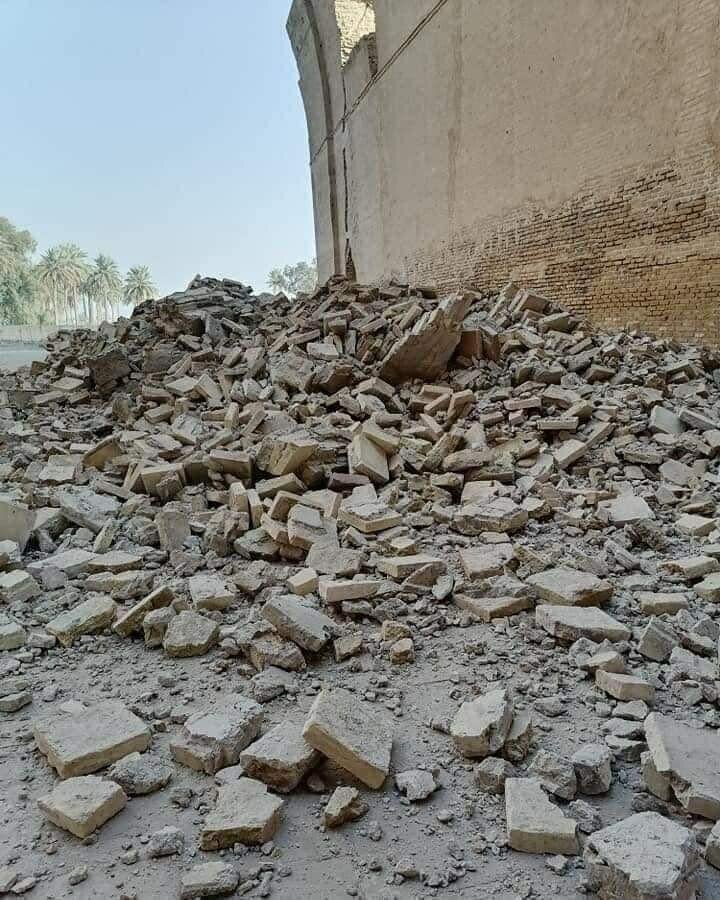Taq Kasra, Sassanid masterpiece of architecture, partly collapses in modern Iraq

TEHRAN – Segments of Taq Kasra, which is an architecturally-important Sasanian-era Persian monument in modern Iraq, has recently been collapsed, Mehr reported based on Iraqi sources.
“Some Iraqi social media users have posted pictures of Taq Kasra, which is located near Baghdad, writing the vault of the monument is partly collapsed at the beginning of 2021,” the news agency said.
“Social media activists and cultural heritage lovers have also criticized the Iraqi government's neglect of the monument, disapproving the poor governmental performance in maintaining it… Relevant officials in Iraq have not yet commented on the matter and have not confirmed the news,” the news agency said.
For years, there have been talks between Iranian and Iraqi officials to jointly restore the magnificent structure, but nothing happened.
Even Iranian archaeologists have repeatedly asked the Iranian authorities to consult on the restoration of the monument in cooperation between the two countries. Because they believe Taq Kasra is in dire need of urgent repairs as every time a part of it collapses.

In 2019, Tehran Municipality hold talks with Baghdad’s urban planners and authorities to restore several aging monuments in Iraq including Taq Kasra.
Taq Kasra, also called Ivan Madaen or the Archway of Ctesiphon, are names given to the remains of a circa 3rd–6th-century Sasanian-era Persian monument, which is located near the modern town of Salman Pak, a city located approximately 15 miles (24 km) south of Baghdad.
The arch was part of the imperial palace complex, however, the exact time of its construction is not known with certainty. Some historians believe the founder is Shapour I who ruled Persia from 242 to 272 CE and some others believe that construction possibly began during the reign of Anushiruwan the Just (Khosrow I) after a campaign against the Byzantines in 540 CE.
Ctesiphon served as the winter capital of the Parthian empire and later of the Sasanian empire. Classical writers claimed that Ctesiphon was founded by the Parthian king Vardanes. The first reliable mention of Ctesiphon, however, is as a Greek army camp on the east bank of the Tigris River opposite the Hellenistic city of Seleucia, according to Britannica.
Since then the course of the river has shifted, no longer flowing between the ruins of the two cities but instead dividing Ctesiphon itself. In 129 BC, when the Arsacids (Parthians) annexed Babylonia, they found Ctesiphon a convenient residence and cantonment, and under their rule Seleucia and its royal suburb of Ctesiphon came to form a twin city and a capital of the empire. A discontinuous Roman occupation of Seleucia and Ctesiphon began under the emperor Trajan in 116 CE. During the Roman sack of the city complex in 165 CE by the general Avidius Cassius, the palaces of Ctesiphon were destroyed and Seleucia was depopulated. The Sasanian monarchy, which replaced the Arsacids in 224 CE, resettled Ctesiphon.
AFM/
Leave a Comment